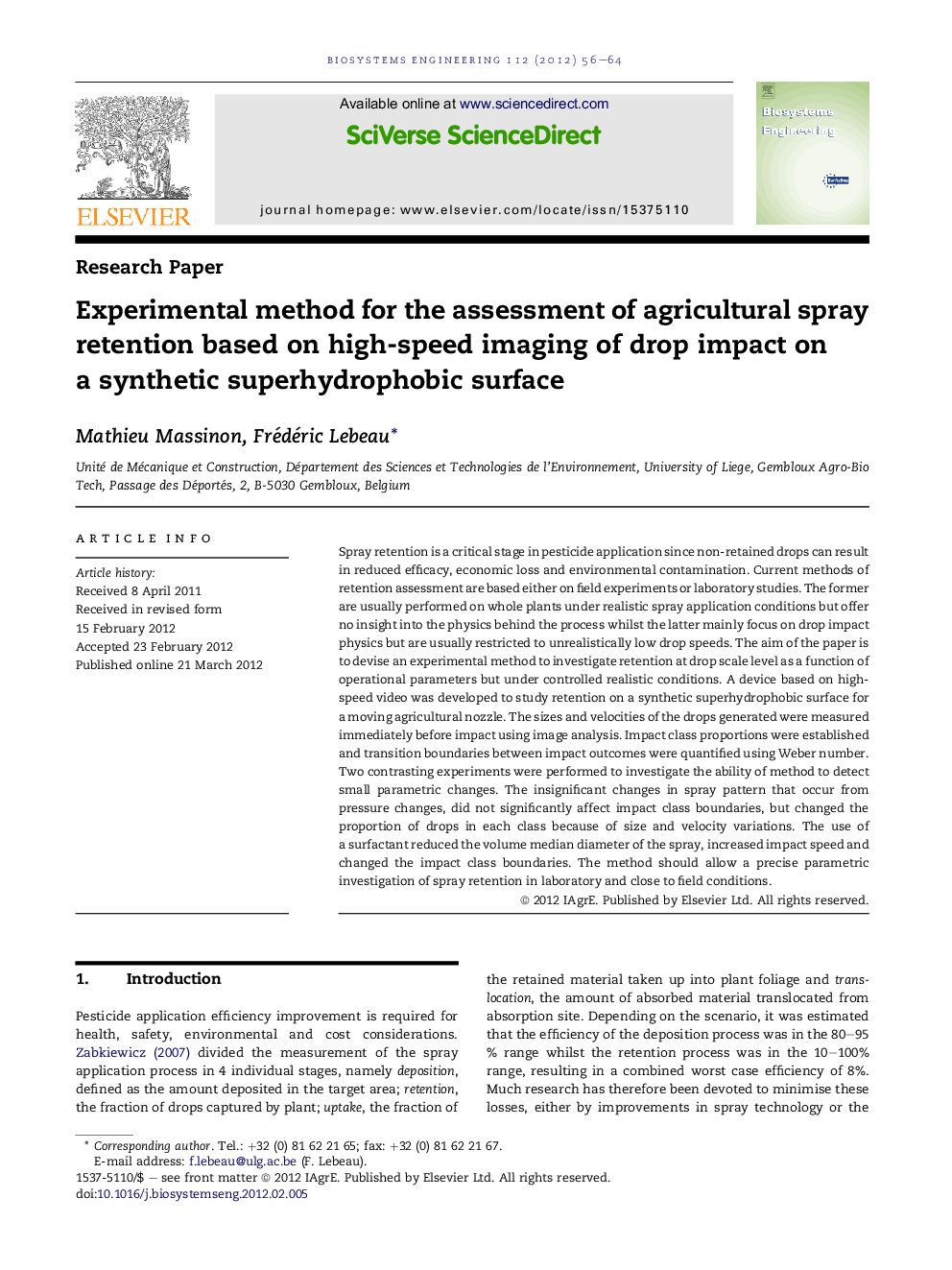| Article ID | Journal | Published Year | Pages | File Type |
|---|---|---|---|---|
| 1711308 | Biosystems Engineering | 2012 | 9 Pages |
Spray retention is a critical stage in pesticide application since non-retained drops can result in reduced efficacy, economic loss and environmental contamination. Current methods of retention assessment are based either on field experiments or laboratory studies. The former are usually performed on whole plants under realistic spray application conditions but offer no insight into the physics behind the process whilst the latter mainly focus on drop impact physics but are usually restricted to unrealistically low drop speeds. The aim of the paper is to devise an experimental method to investigate retention at drop scale level as a function of operational parameters but under controlled realistic conditions. A device based on high-speed video was developed to study retention on a synthetic superhydrophobic surface for a moving agricultural nozzle. The sizes and velocities of the drops generated were measured immediately before impact using image analysis. Impact class proportions were established and transition boundaries between impact outcomes were quantified using Weber number. Two contrasting experiments were performed to investigate the ability of method to detect small parametric changes. The insignificant changes in spray pattern that occur from pressure changes, did not significantly affect impact class boundaries, but changed the proportion of drops in each class because of size and velocity variations. The use of a surfactant reduced the volume median diameter of the spray, increased impact speed and changed the impact class boundaries. The method should allow a precise parametric investigation of spray retention in laboratory and close to field conditions.
► Method allows the assessment of retention of pesticide sprays in controlled conditions. ► Method is promising for ranking mixtures and application techniques related to retention. ► Surfactant affects retention by changing spray characteristics and impact behaviours. ► Surfactant modifies splashing because of a shift from Cassie–Baxter to Wenzel regime. ► Pressure modification affects retention by changing spray characteristics.
